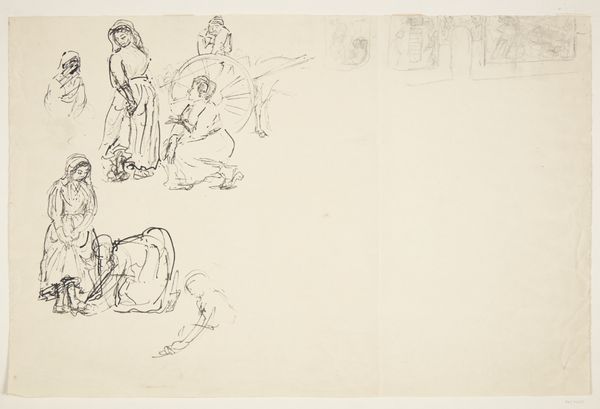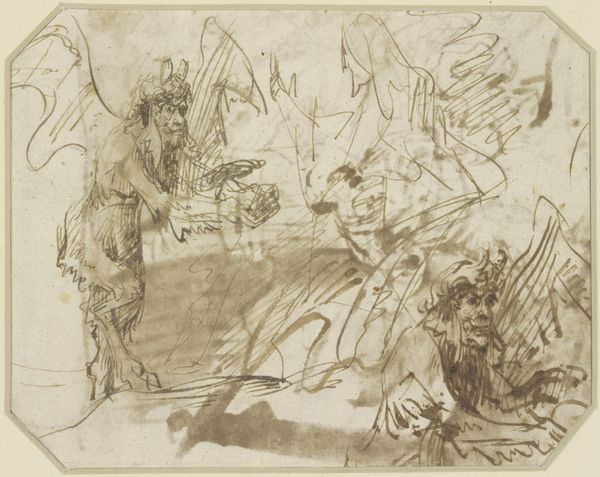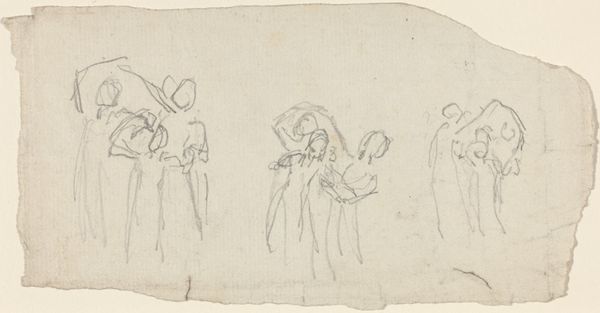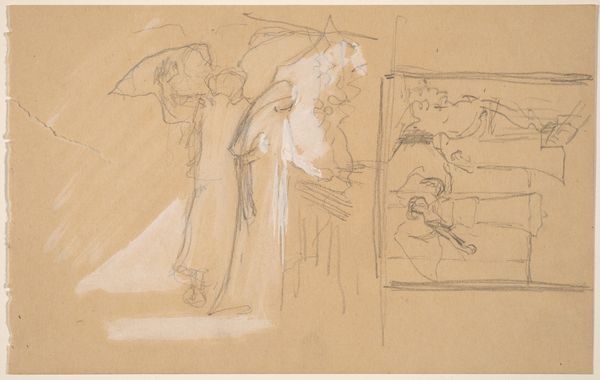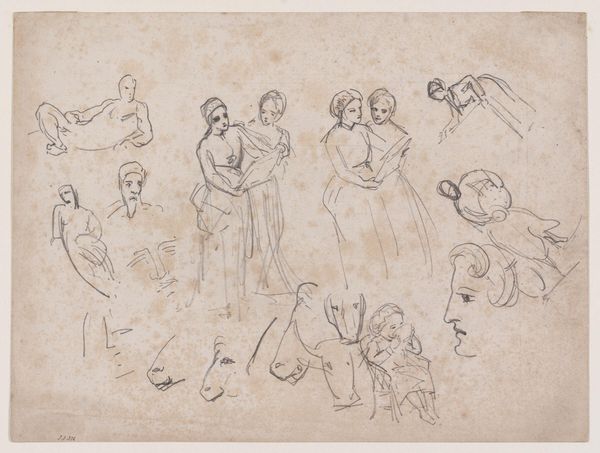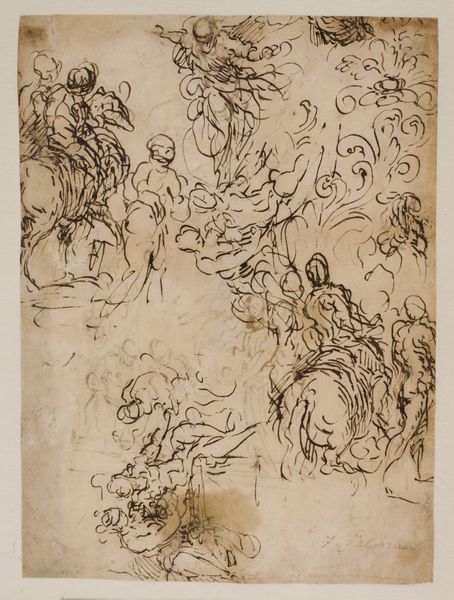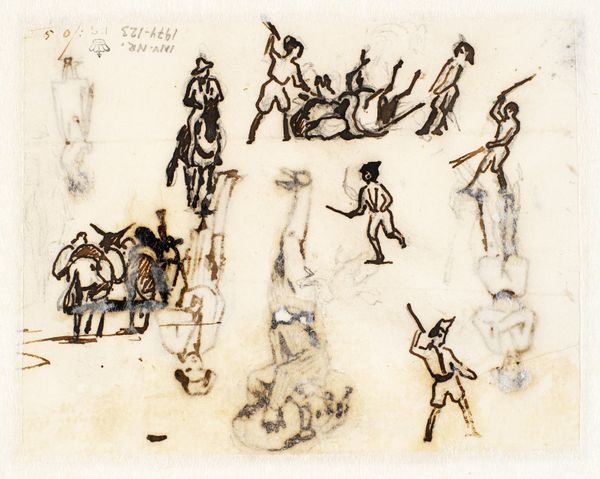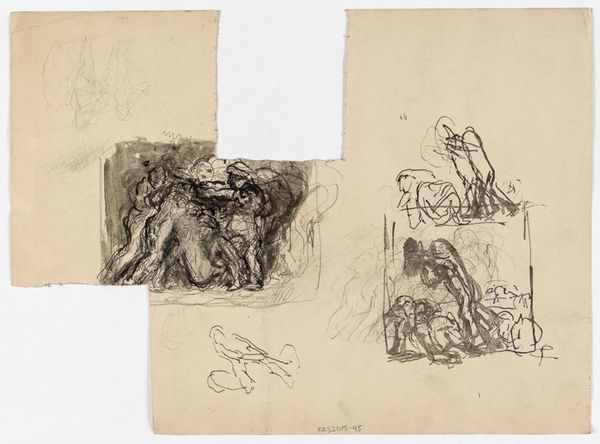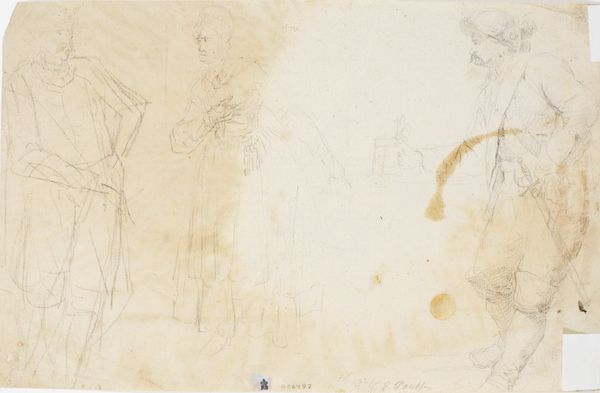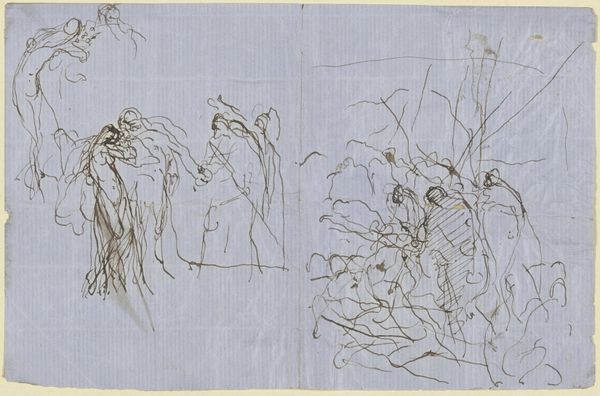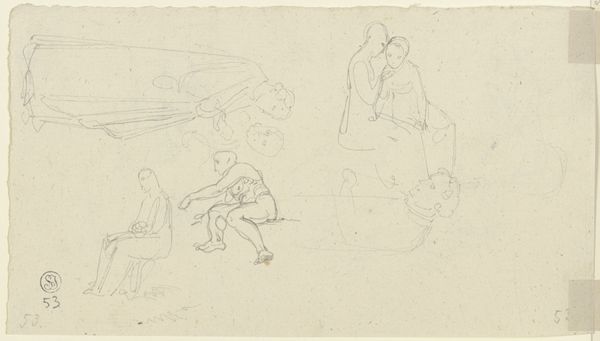
drawing, watercolor
#
drawing
#
figuration
#
watercolor
#
watercolour illustration
#
history-painting
#
academic-art
#
sketchbook art
#
watercolor
Dimensions: 214 mm (height) x 80 mm (width) (bladmaal)
Curator: Here we have Martinus Rørbye’s "Three Studies of the Resurrected Christ," executed in 1847. A delicate study rendered with pencil and watercolor, currently residing here at the SMK. What's your first take? Editor: It strikes me as a rather muted portrayal of a triumphant scene. The sepia tones and tentative lines create a sense of quiet contemplation, more internal than overtly celebratory. Curator: Indeed. Consider the visual grammar. Rørbye uses layering and repetition across the three panels. Note the strategic placement of the figure's outstretched arms and subtle watercolor washes, which emphasize ethereal, gestural qualities. There is a sophisticated structural coherence at play, a mastery of classical academic style. Editor: But the setting is conspicuously absent. Where is this resurrection taking place? Are we meant to imagine a specific place, or is this a deliberate de-emphasis on the earthly location? It makes me think of the burgeoning theological debates of the period, where interpretations of the gospels were highly politicized. Curator: Precisely. These rapid sketches point towards Rørbye's larger artistic and social context. He sought royal patronage, and history paintings were quite in vogue to solidify national identity, which certainly benefited religious works. Editor: But wouldn't a more definitive depiction solidify religious power more, rather than this draft-like portrayal? Perhaps Rørbye, amidst the fervor, allows space for individual reflection. This ambiguity would align with the rising tide of pietism during the 19th century where a personal connection with divinity was a goal. Curator: Perhaps it does both simultaneously, addressing varied social positions in that era. Notice the textural variance he achieves with minimal washes. That economy, in its way, elevates the subject. This tension keeps our attention moving about the picture plane and creates balance throughout. Editor: I find your focus on the compositional balance insightful, I concede. This invites me to think more carefully about the cultural atmosphere. Even these delicate brushstrokes hint at profound, complicated, ideological battles taking place across Denmark during that era. Curator: A telling observation. These small watercolors and drawings, like linguistic structures, expose deeper, fundamental cultural codes within both Rørbye and 1840s Copenhagen. Editor: Agreed. This was much more than just a series of resurrection studies.
Comments
No comments
Be the first to comment and join the conversation on the ultimate creative platform.

